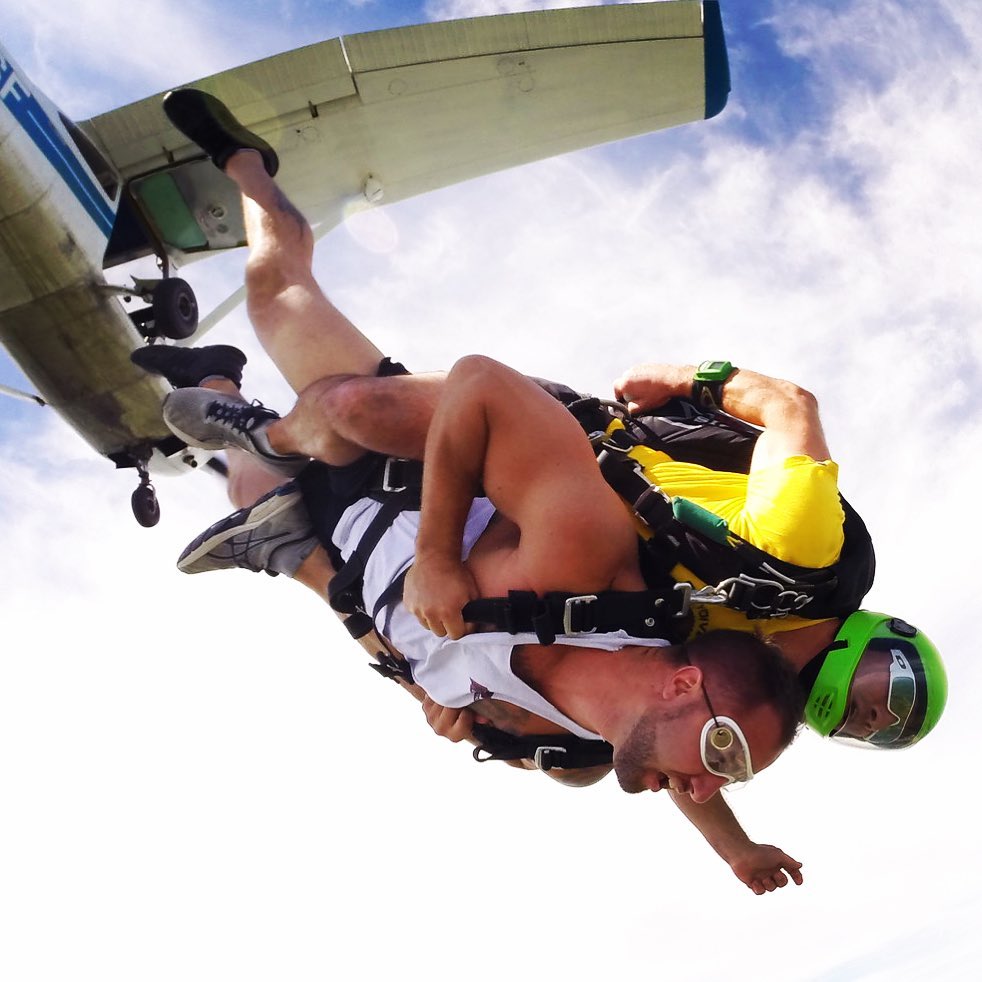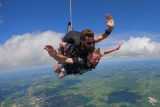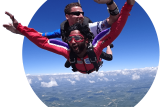What Are the Effects of Skydiving on the Body?
Why Skydive
Posted by: Wisconsin Skydiving Center 3 years ago
It might sound dramatic to say, but once you go skydiving, you’ll never be the same. The side-effects of skydiving aren’t always what you’d expect, and through our time in the sport, we’ve seen people experience changes both psychological and physical. We’ve spent a bit of time covering the positive mental benefits that result from skydiving but what about the effects of skydiving on the body?
The effects of skydiving on the body can be broken down into two groups: short-term effects of skydiving on the body and long-term effects of skydiving on the body. Let’s get right down to it, what happens to your body when you skydive?

Short Term Effects of Skydiving on The Body
The Adrenaline Rush
Most people are pretty familiar with the first effect of skydiving on the body we will discuss: the adrenaline rush! As your body experiences increased levels of adrenaline, during the jump and immediately after, the effects of skydiving on the body physically manifest as increased heart rate, increased blood flow, dilated pupils, relaxed airways, and shallow breathing. This healthy boost causes a flood of endorphins to be released into the bloodstream. The immediate result is sharpened mental clarity, feelings of euphoria, and, even, a temporary increase of physical strength!
Will I be sore after skydiving?
Whether you are sore or not after skydiving, in part, will depend upon a few factors: the type of skydive you’re doing, your general physical condition, and your level of flexibility.
As a tandem student skydiver, you will not, generally, notice any soreness after skydiving. Occasionally, if the leg straps of the harness aren’t sitting quite right when it is time to deploy the parachute, there may be some bruising and tenderness to the inside of the upper thigh.
As a student skydiver, in the beginning, you may notice being sore after a day of jumping. Holding the skydiving arch at the beginning can be physically demanding, and, likewise, making multiple skydives in a day can leave you feeling pleasantly exhausted similar to the feeling you get after a particularly good workout. As your body gets used to arching, you’ll notice your level of fatigue and soreness will dwindle to almost nothing. To help speed up the process, pair your newfound skydiving hobby with regular low-impact workouts.

Licensed skydivers, or as they are also known “sport jumpers”, have different ways of approaching skydiving. Some jumpers like to knock out 10-12 jumps in a day. Other jumpers take a more measured approach and make three. There is such a thing as being in “skydiving shape,” and after a long winter, if our usual three-jump-maximum fun jumper tries to crank out six or more skydives, they’ll definitely feel it in the morning! With conditioning, regular altitude adjustments, and a visit to the dropzone each weekend, it will take no time at all for a jumper to get back in tip-top jump shape!
Long Term Effects of Skydiving
Back Muscles on Fleek
You don’t have to hit the gym every day to get the chiseled definition you desire in those beautiful back muscles of yours! Introducing your skydiving workout plan!
To maintain stability in freefall, skydivers falling in a belly-to-earth orientation perfect a position we call “the arch.” To arch properly, the hips are pressed forward and down toward the ground, the head and chin tilted slightly up, and the legs extended providing just a bit of positive pressure against the wind. Maintaining this position takes some muscle, and the more you do it, the stronger you get. One of the long-term effects of skydiving is an increase in the strength of the muscles along your spine as well as your core and, of course, your fabulous gluteus maximus (butt workout!)!

Boosted Stamina
On a tandem skydive, your instructor will be wearing, and, likewise carrying the 30+ pound skydiving pack. As a solo skydiver, the weight is all on you! The gear you’ll have to heft around isn’t quite so heavy, but it is certainly enough to make a difference.
Every time you walk to the plane, you’ll be lugging 20 extra pounds with you. When you land and hustle back from the landing area to go again, the weight is coming with you. Now, imagine if you do that 6-7 times a day. It’s easy to see how the incremental “workouts” will add up. It may be difficult at first, but with time, you’ll notice a pretty sizable increase in your stamina levels.
A Little Bit Bendier
A third long-term effect of skydiving on the body is increased flexibility. As we mentioned above, the arch body position is crucial for a stable belly-to-earth freefall. With each jump that you do, your body builds up muscle memory which allows it to assume the position with greater ease. The added benefit is that you’ll find you are a bit bendier on the ground too!

Don’t delay! Take advantage of these epic effects of skydiving on the body and schedule your skydive with Wisconsin Skydiving Center today!
Categories:
You May Be Interested In:

What is a Skydiver?
3 months ago by Wisconsin Skydiving Center

Top 8 Fun Things to Do in Milwaukee
5 months ago by Wisconsin Skydiving Center

What to Expect at WSC
9 months ago by Wisconsin Skydiving Center

Overcoming Fear with the Wisconsin Skydiving Center Rise Above Program
11 months ago by Wisconsin Skydiving Center